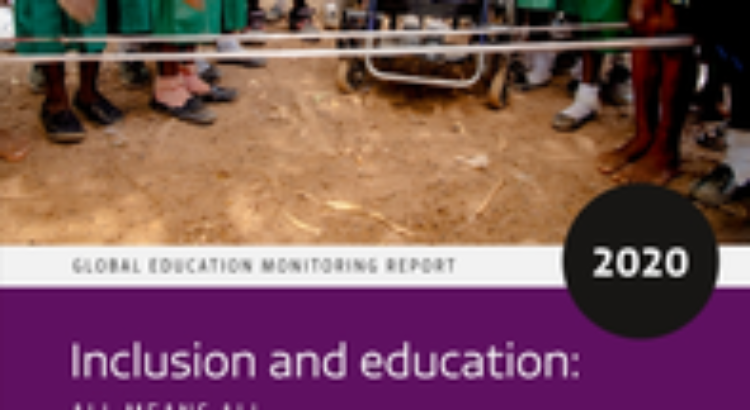
Inclusion and education

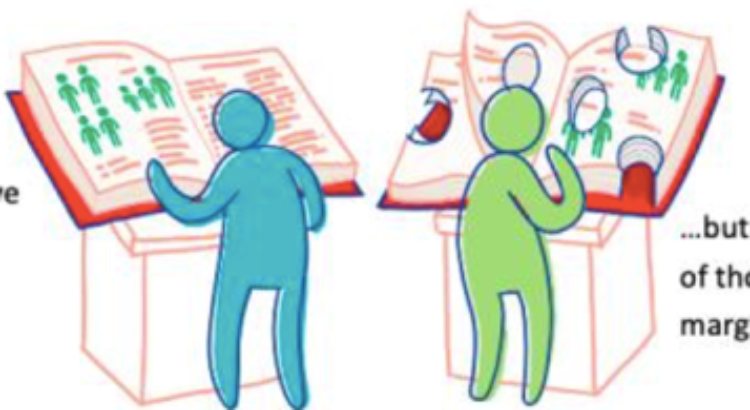
New 2020 GEM Report shows inclusion has never been as relevant as countries count the education cost of Covid-19
The 2020 GEM Report on inclusion and education, All means all, was launched this morning at an online event featuring an interactive high-level panel and clips of videos and animations of its key messages and recommendations.
This year’s report shows that, all over the world, layers of discrimination on the basis of gender, remoteness, wealth, disability, ethnicity, language, migration, displacement, incarceration, sexual orientation, gender identity and expression, religion and other beliefs and attitudes deny students the right to be educated with their peers or to receive education of the same quality.
It identifies an exacerbation of exclusion during the COVID-19 pandemic estimating that about 40% of low and lower-middle income countries have not supported disadvantaged learners during school shutdown. It calls for countries to focus on those left behind as schools reopen so as to foster more resilient and equal societies.
Exclusion in education is persistent
Even before the pandemic, 258 million children and youth were entirely excluded from education, with poverty as the main obstacle to access. In low- and middle-income countries, adolescents from the richest 20% of all households were three times as likely to complete lower secondary school as were as those from the poorest homes. Among those who did complete lower secondary education, students from the richest households were twice as likely to have basic reading and mathematics skills as those from the poorest households.
Language can be a barrier to quality education for some: 10-year old students in middle and high-income countries who were taught in a language other than their mother tongue typically scored 34% below native speakers in reading tests.
Learners with a disability also face challenges. In 10 low- and middle-income countries, children with disabilities were found to be 19% less likely to achieve minimum proficiency in reading than those without disabilities.
The Report shows the weight of intersecting disadvantages for some learners. Despite the proclaimed target of universal upper secondary completion by 2030, hardly any poor rural young women complete secondary school in at least 20 countries, most of them in sub-Saharan Africa.
It emphasizes the importance of countries starting to monitor students’ experiences, and not just learning, noting that one in four 15-year-old students reported feeling like outsiders at school. One-third of 11- to 15-year-olds have been bullied in school. In the United States, LGBTI students were almost three times more likely to say that they had stayed home from school because they were not feeling safe.
Some countries’ laws and policies blatantly exclude
Alongside the Report, we are also launching a new website today: Profiles Enhancing Education Reviews, PEER, at education-profiles.org, with information on laws and policies concerning inclusion in education for every country in the world. PEER informed the 2020 GEM Report, showing that fewer than 10% of countries have laws that help ensure full inclusion in education. The report calls for countries to widen their definition of inclusion, which often do not cover all marginalised groups, but single some out, as though inclusion can be reached one group at a time.

PEER also shows that many countries still practice education segregation, which reinforces stereotyping, discrimination and alienation. Laws in a quarter of all countries require children with disabilities to be educated in separate settings, rising to over 40% in Latin America and the Caribbean, as well as in Asia.
Two countries in Africa still ban pregnant girls from school, 117 allow child marriages, while 20 have yet to ratify Convention 138 of the International Labour Organization which bans child labour. In several central and eastern European countries, Roma children are segregated in mainstream schools. In Asia, displaced people, such as the Rohingya, are taught in parallel education systems.
Education systems often fail to take diverse learners’ needs into account
Just 41 countries worldwide officially recognize sign language and, globally, schools are more eager to get internet access than to cater for learners with disabilities. Girls need water, sanitation and hygiene services to continue attending class during menstruation, but some 335 million girls attend schools that do not have them.
Reflecting learners’ diverse needs requires textbooks and curricula to be inclusive, yet many still alienate by omission or false representation. Girls and women only made up 44% of references in secondary school English-language textbooks in Malaysia and Indonesia, 37% in Bangladesh and 24% in the province of Punjab in Pakistan. The curricula of 23 out of 49 European countries do not address issues of sexual orientation, gender identity and expression.
Moving towards an inclusive education can be costly, but there are many teaching methods that can be done for free to make children feel more wanted in school. Teachers need and want training on inclusion, which fewer than 1 in 10 primary school teachers in 10 Francophone countries in sub-Saharan Africa said they had received. A quarter of teachers across 48 countries reported they wanted more training on teaching students with special needs.
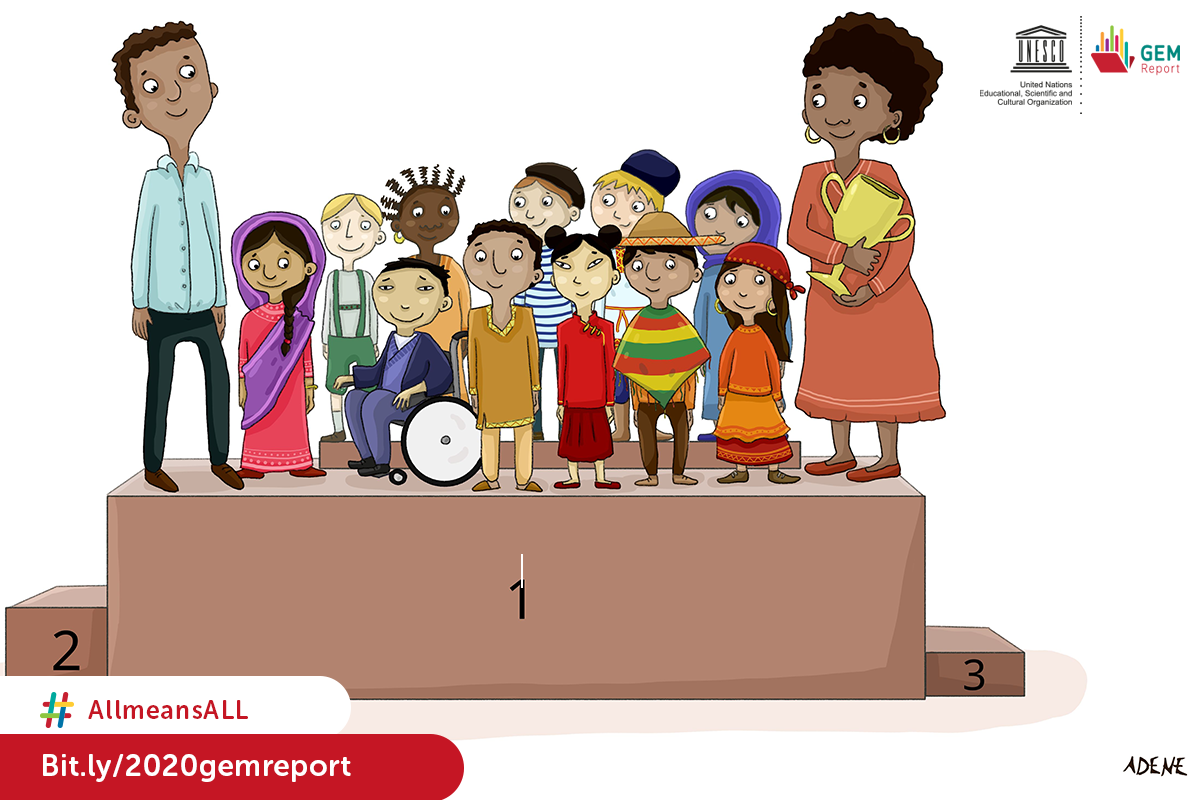
Almost half of low- and middle-income countries do not collect enough education data about children with disabilities. Household surveys are key for breaking education data down by individual characteristics. But 41% of countries – home to 13% of the world’s population – did not conduct surveys or make publicly available data from such surveys. Figures on learning are mostly taken from school, failing to take into account those not attending.
Policy makers must recognise that they need to bring communities and parents on board with the idea of inclusion, given that parents’ discriminatory beliefs are sometimes a barrier to change. Some 15% of parents in Germany and 59% in Hong Kong, China, feared that children with disabilities disturbed others’ learning. Parents with vulnerable children wish to send them to schools that ensure their well-being and respond to their needs. In Queensland, Australia, for example, 37% of students in special schools had moved away from mainstream establishments.
Signs of progress towards inclusion
Many countries go out of their way to accommodate different learners’ needs: Odisha state in India, for example, uses 21 tribal languages in its classrooms, Kenya has adjusted teaching to the nomadic calendar and, in Australia, the curricula of 19% of students were adjusted by teachers so that their expected outcomes could match students’ needs.
Download and share the Report with your networks. On our home website, which has a new look and fresh feel, you can also find additional resources on the 2020 GEM Report page, including the summary, the background papers and the social media pack.
Join the conversation on #AllmeansALL and our various online activities happening over the coming weeks:
- Read the recommendations in our digital campaign and tell your education minister which you think should be prioritised in your country.
- If you are an academic, join our Any Questions Answered session on this blog on 29 June
- Take part in our Twitter Q&As with Ministers of Education on inclusion and education, starting with @MatthewOPrempeh from Ghana and @dsengeh from Sierra Leone. We will work with them to provide their answers in the form of a podcast in the coming weeks
Fuente: https://unesdoc.unesco.org/ark:/48223/pf0000373718
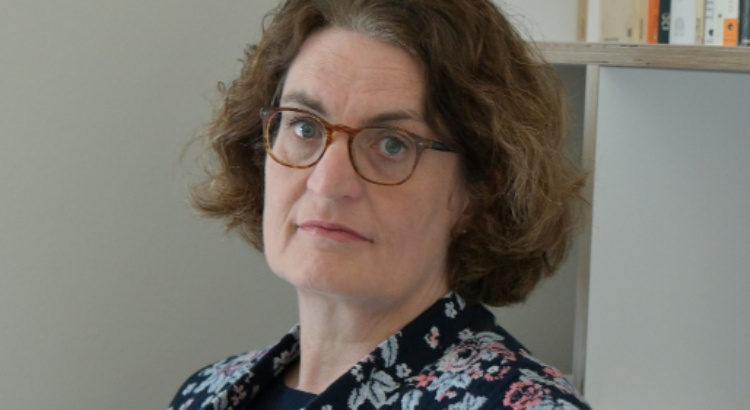
Sabine Kreutzer: Putting the child at the centre in school models in Germany
Gem REPORT
Sabine is one of many champions being highlighted by the GEM Report in the run up to the launch of its 2020 publication on inclusion and education: All means all, due out 23 June. In their own way, and in multiple countries around the world, these champions are fighting for learner diversity to be celebrated, rather than ignored.
Sabine, the principal of Marie Kahle secondary school in Bonn, Germany, understood quickly in her career that child-focused education was key for learning. Eleven years ago, when her school was founded, she decided that children were the most important asset of her school and, ever since, her school has implemented initiatives to keep that idea at the core of its operations.
Bonn is a diverse community, home to many immigrants from African and Middle Eastern counties. Sabine is proud to welcome 960 students at her school including many children whose native tongue is not German and children with special needs.
At Marie Kahle school, two-thirds of the day are run as traditional classes and the remaining third of the day uses the Dalton method: classrooms are assigned by teacher and subject with no age or grade difference. Children choose which teacher and subject they want to work with and they complete tasks with personalized assistance from these teachers.
The method does not carry additional costs for the school and has proven to develop students’ self-reflection and responsibility for their own educational process and their ability to work independently. Although students work at their own pace and on their own task, they are all working together in the same classroom. This approach eliminates comparisons between students and makes learning timeless; the objective is not to see who finishes first or last; rather, the objective is for students to become competent in a series of subjects by the end of their time at school.
Students welcome this method as they do not feel pushed to finish their work at a certain pace, and their objective is to learn. This is also true for special needs students. Sabine can see improvements in their confidence and wellbeing; they are not in constant comparison with their peers and receive extra support without realizing it because every student receives support. Teachers also see the benefit as students choose to go to their classes and are not pre-assigned by a schedule. The efforts and method of the school have not gone unnoticed. In 2019, the school won the Jakob Muth award for inclusive education.
“We focus so much on teaching a subject and not on what needs to happen for a child to learn. We are always looking for a ‘one-size-fits-all’ recipe, but that doesn’t exist; every student, with or without special needs, is different”.
For Sabine, inclusive education means flexible schools that focus on each student and accommodate their needs, not the other way around. Every student is different. Inclusive education is not easy to implement but it is not expensive; it is a matter of decision and attitude. To achieve inclusive education, student and teacher have to work together as a team. Making a difference between special needs teachers and regular teachers leads to further division among students and perpetuates the idea that regular students are all the same when they are not. If she could implement one measure to ensure inclusion in education, it would be to increase reflection time for teachers.
Fuente: https://gemreportunesco.wordpress.com/2020/05/22/suraj-yengde-trying-to-leave-his-caste-behind-him-to-pursue-his-education/
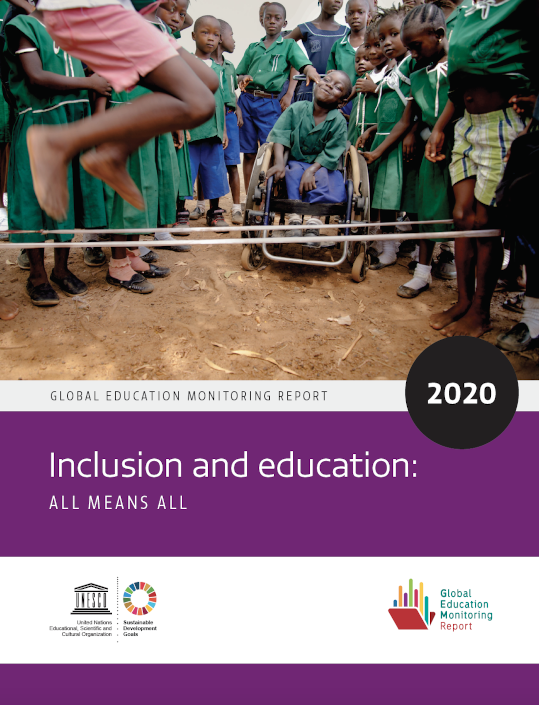





 Users Today : 17
Users Today : 17 Total Users : 35459923
Total Users : 35459923 Views Today : 21
Views Today : 21 Total views : 3418486
Total views : 3418486